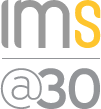Market Opportunity or False Trend?
Client Overview
Global Marketing Strategy and Portfolio Strategy division of a mid-size multinational branded pharmaceutical company
The Project
Assess the extent to which an emerging trend represents a real market opportunity. Develop a target product profile including recommended companion diagnostics. Provide relevant data and criteria to facilitate informed decision-making.
The Challenge
For pharmaceutical companies the R&D life cycle often lasts a decade or more, and can be riddled with false starts. Consequently, the challenge is to always stay abreast of trends and, preferably, to stay ahead of them.
Background
This multinational pharmaceutical company had established strong leadership positions in a narrow set of therapeutic areas. Their challenge was to maintain leadership in these established areas, while also expanding their portfolio into adjacent therapeutic areas or new disease states.
As a result of their internal trend-monitoring efforts (review of recent published articles and dialogue with key opinion leaders) the Company believed there was an emerging disease state that previously had not been adequately described, measured, or treated. The company quickly needed to determine if this emerging trend in patient symptoms represented a new treatable disease state, or just an anomaly.
The Research Solution
The research challenge facing IMS was to develop a methodology that would allow us to tease out information for a yet undeveloped market, and to formulate a minimally acceptable product profile (MAPP) for a virtually unknown urologic condition. After answering the immediate research question, we were tasked with developing a model format MAPP that they could implement globally, to improve consistency in their research reporting.
IMS launched a rigorous research effort under two seasoned investigators in healthcare. The research unfolded in three stages:
Stage 1: In depth secondary research to validate and expand the client’s initial trend identification work.
Stage 2: Qualitative research with urologists that explored epidemiology, disease symptomology, diagnostics, physician trends and unmet patient needs. These interviews resulted in a set of hypotheses that led to the third stage.
Stage 3: Hypotheses testing and evaluation through a second series of in-depth 60 minute, one-on-one interviews with urologists.
Early findings revealed two main challenges: almost no general awareness of this new urologic condition (in other words when symptoms were recognized, they were not associated with a distinct condition), and no validated diagnostic tools in use amongst specialists that might define the disease.
These conditions defined the marketplace challenges associated with pursuing this trend/disease state. Stage 3 of the research helped IMS determine whether a disease state could be defined, diagnostic parameters developed, and treatment protocols prescribed.
The Results: IMS provided a comprehensive analysis and report that defined:
- A viable marketplace opportunity sizing and requirements for success
- Key clinical and safety efficacy endpoints
- A minimally acceptable product profile
- Recommended physiologic parameters to measure in a diagnostic tool and description of the education effort required
Featured Case Studies
Strategy & Planning Case Studies
Market Opportunity or False Trend?
A New Brand Position and All-Encompassing Product Transition
Implementation / Execution Case Studies
Training & Commercial Excellence Case Studies

